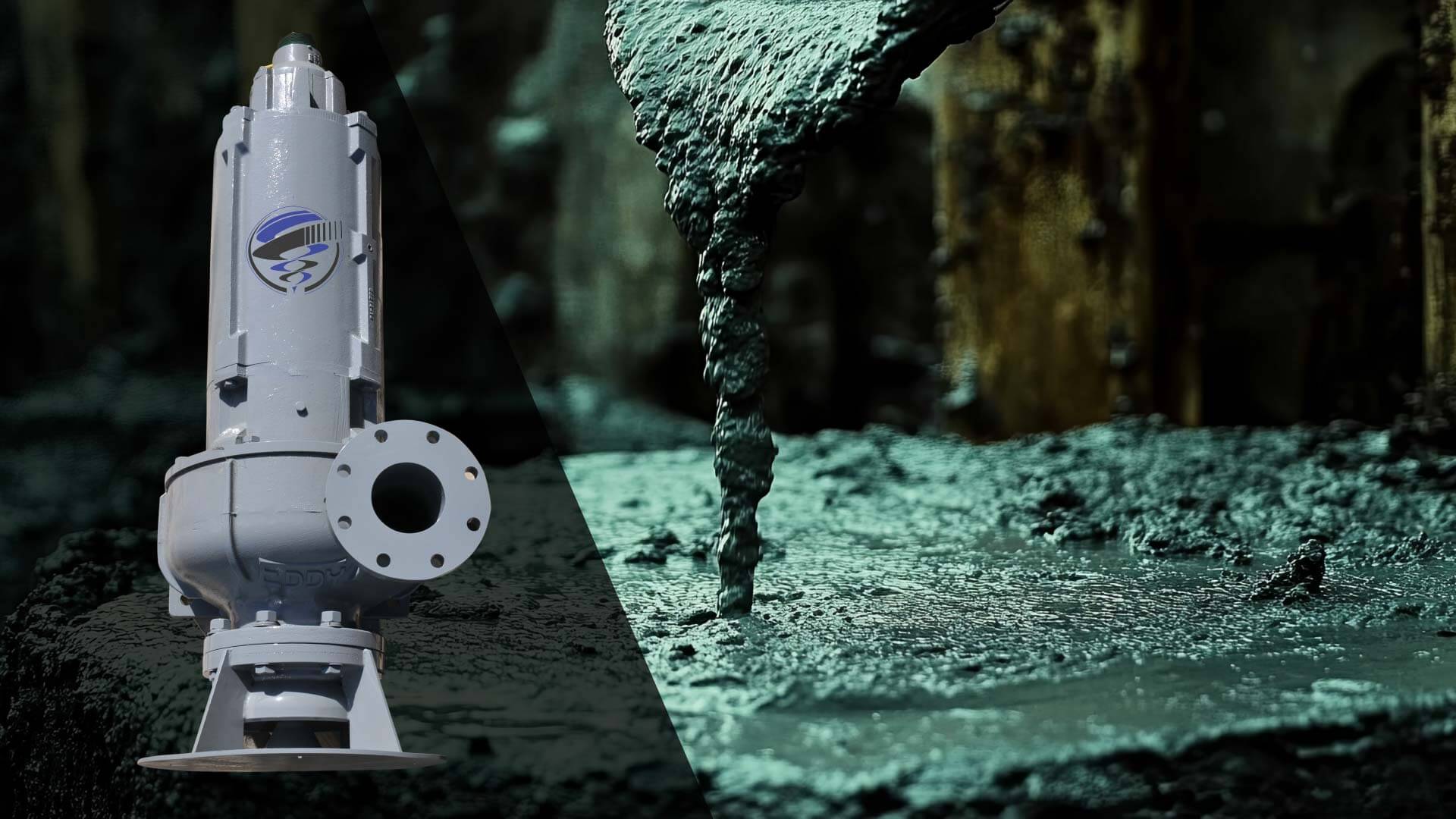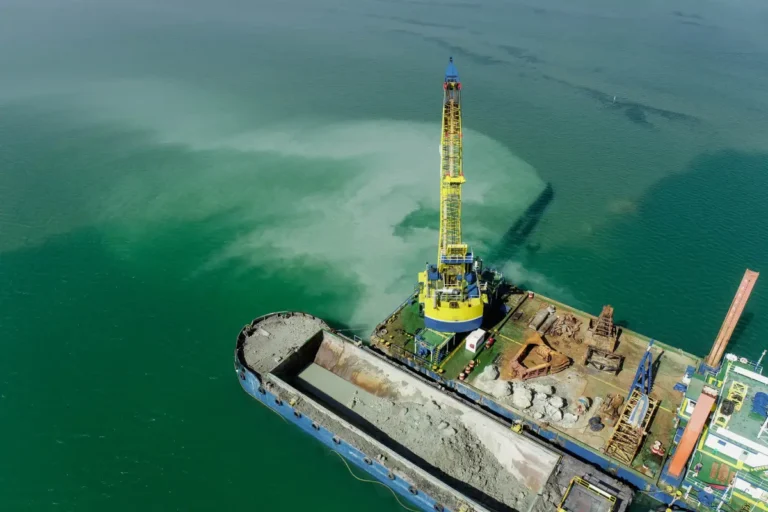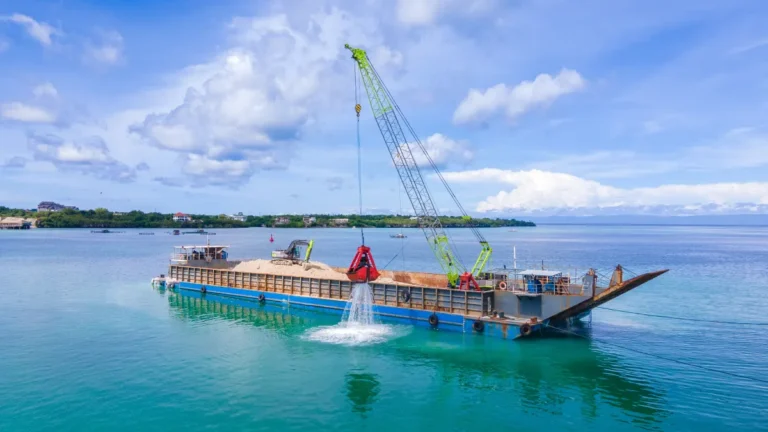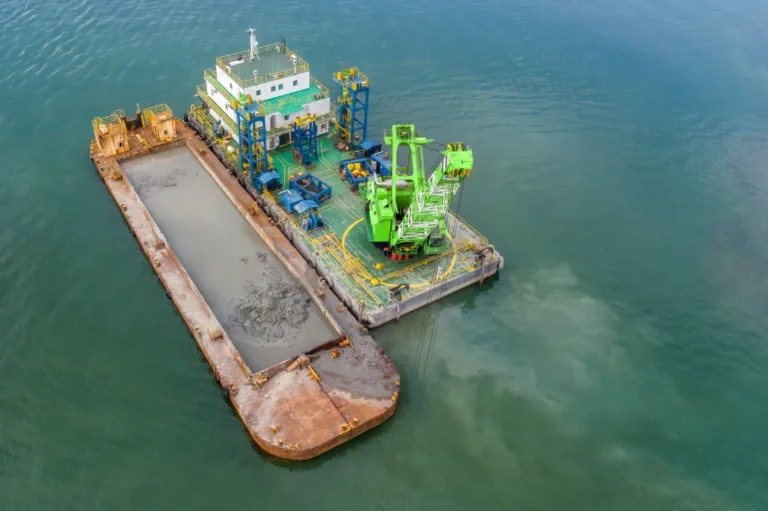A submersible dredge pump is designed to operate fully submerged in water or slurry. It is ideal for handling abrasive and high-density materials in industries like mining, construction, and industrial processing. Its primary function is to extract slurry—a mixture of water and solid particles like sand, gravel, and mud—from water bodies or industrial lagoons. The pump’s impeller creates powerful suction, drawing in the slurry and discharging it through a pipeline for efficient material transport. Built with heavy-duty impellers, wear-resistant casings, and advanced sealing systems, submersible dredge pumps withstand harsh conditions while providing increased suction power, reduced cavitation, and improved stability.
Handling high-solids content presents challenges like increased wear and reduced efficiency. A well-designed submersible slurry pump minimizes these issues by handling large particles and high-density mixtures without clogging. A hydraulic submersible dredge pump offers greater control over speed and pressure, making it ideal for variable slurry conditions. High-density slurries increase motor load and energy consumption, while high-viscosity mixtures create additional resistance, reducing flow and increasing wear. Hydraulic drive systems allow for real-time adjustments, ensuring consistent performance and extending pump life.
Understanding Submersible Dredge Pumps
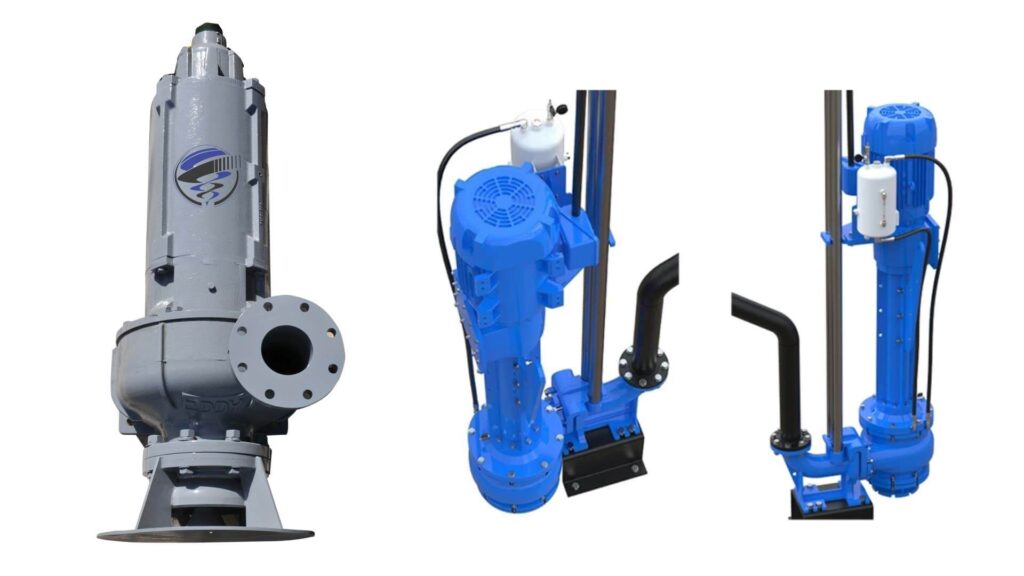
What Is a Submersible Dredge Pump?
A submersible dredge pump is a heavy-duty pump designed to operate while fully submerged in water or slurry. Unlike surface pumps, which rely on suction from above, submersible dredge pumps are placed directly into the dredging environment. This allows them to generate more powerful suction and handle higher concentrations of solids. This direct contact with the material being pumped improves overall efficiency and reduces the chances of cavitation, which can damage the pump and reduce performance.
The core function of a submersible dredge pump is to extract and transport slurries containing sand, mud, gravel, silt, and other solid materials. These pumps are widely used in industries such as mining, construction, oil and gas, and environmental cleanup, where handling abrasive and high-density materials is essential.
Components and Design Features
Submersible dredge pumps are engineered for durability and high performance in tough dredging environments. Their design includes several key components that enable them to handle high-solids content and resist wear:
- Impeller Design:
The impeller is one of the most critical components of a submersible dredge pump. It creates the suction force needed to draw the slurry into the pump. High-efficiency pumps typically feature open or semi-open impellers designed to handle large particles and prevent clogging. Hardened materials like high-chrome alloys are often used to resist abrasion and extend the impeller’s lifespan.
- Casing Material and Durability:
Abrasive materials constantly wear the pump casing. To prevent premature failure, high-quality submersible dredge pumps use heavy-duty materials such as high-chrome steel or polyurethane linings. These materials resist corrosion and provide long-lasting protection in harsh environments.
- Sealing Mechanisms to Prevent Wear and Corrosion:
Effective sealing is essential to prevent slurry from leaking into the motor and other internal components. Advanced mechanical seals made from tungsten carbide or silicon carbide are commonly used to handle high-pressure and abrasive conditions. Double mechanical seals provide an added layer of protection against leaks and wear.
Types of Submersible Dredge Pumps
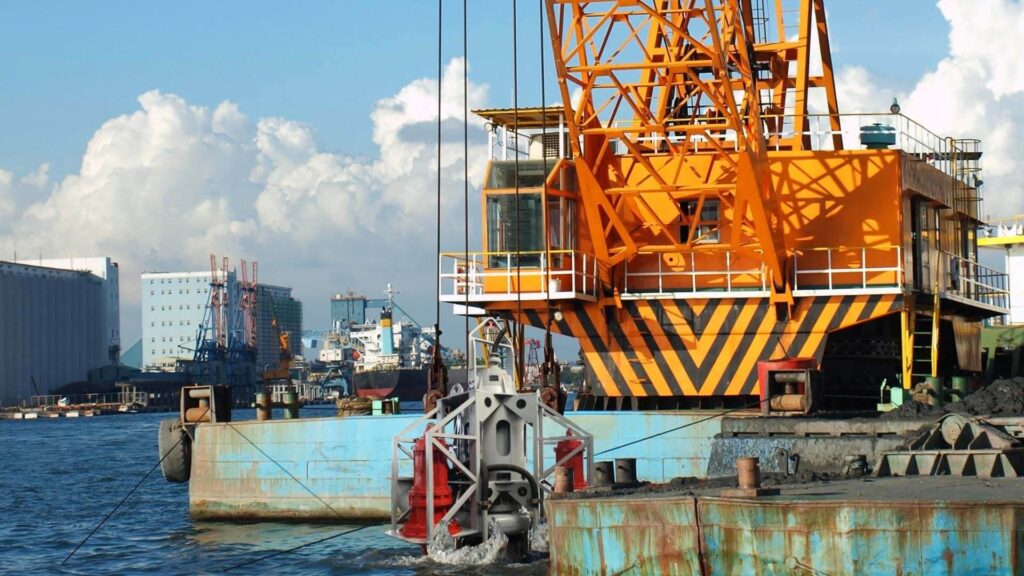
Different dredging applications require specific pump configurations based on the nature of the slurry, operational depth, and environmental conditions. The two primary types of submersible dredge pumps are hydraulic and electric models.
Hydraulic Submersible Dredge Pump
A hydraulic submersible dredge pump is powered by a hydraulic motor rather than an electric one. This design offers several advantages, especially in challenging and remote dredging environments:
- Power Source and Drive Mechanism:
Hydraulic submersible dredge pumps are connected to a hydraulic power pack, which supplies pressurized fluid to drive the pump motor. This configuration allows the pump to operate at variable speeds and handle high-density slurries more effectively.
- Ideal for Remote or High-Depth Applications:
Hydraulic pumps do not rely on a nearby power grid, making them ideal for offshore, deepwater, and remote dredging operations. Their ability to function at significant depths without losing power or suction makes them a preferred choice for underwater mining, offshore oil and gas work, and environmental dredging.
- Flexibility in Challenging Environments:
Hydraulic submersible dredge pumps are designed to handle highly abrasive materials and high-viscosity slurries. Their robust construction and high-torque performance allow them to work in harsh conditions where electric pumps might fail or lose efficiency.
Electric Submersible Slurry Pump
An electric submersible slurry pump is powered by an electric motor, making it suitable for more controlled and stable dredging environments:
- Electrical Drive Benefits:
Electric submersible slurry pumps provide consistent performance with minimal maintenance. Their direct electrical connection allows for precise control over flow rates and pressure, making them well-suited for controlled dredging operations where slurry characteristics remain relatively stable.
- Suitable for Controlled Environments:
Electric pumps are commonly used in mining operations, industrial processing plants, and wastewater treatment facilities where consistent power supply is available. They are less suited for high-depth or remote dredging due to their reliance on electrical infrastructure, but they provide excellent efficiency and lower operating costs in stable environments.
Challenges of High-Solids Applications
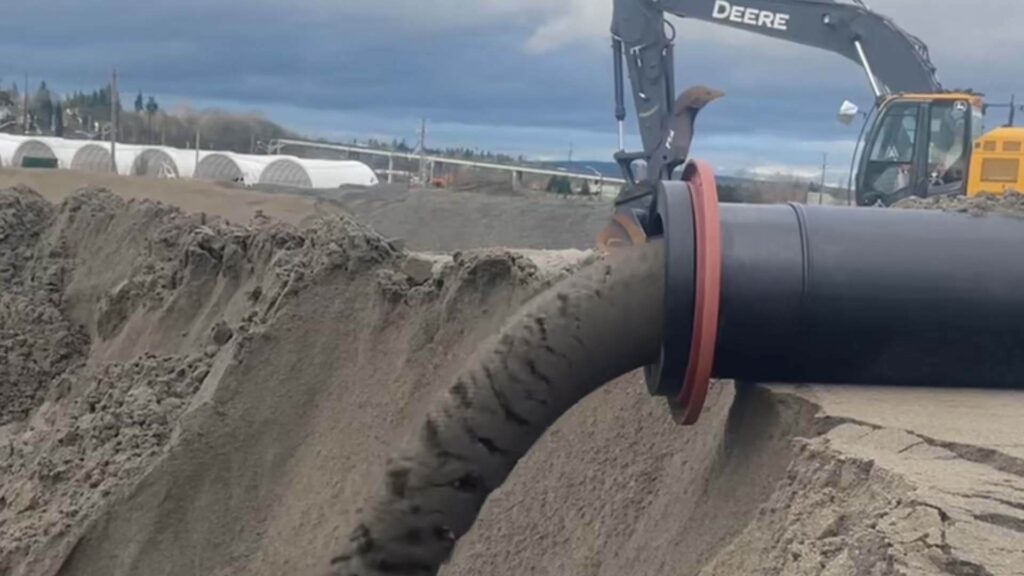
High-solids dredging presents unique operational challenges that can significantly affect the performance and longevity of a submersible dredge pump. Slurry mixtures containing sand, gravel, silt, mining waste, and industrial byproducts are highly abrasive and dense, increasing the mechanical load on the pump and accelerating wear. Successfully managing these challenges requires a properly engineered pump, durable materials, and effective operational adjustments.
High Slurry Density
Slurry density refers to the concentration of solid particles within the pumped mixture. High-density slurries place significant stress on the pump motor and internal components, making it more difficult for the pump to maintain consistent flow rates and pressure.
- How High Density Increases the Load on the Pump Motor:
A submersible dredge pump handling high-density slurries requires more power to maintain suction and discharge pressure. The increased weight and resistance of the slurry create additional strain on the motor, leading to higher energy consumption and the potential for motor overheating or failure.
- Wear and Tear on Internal Components Due to Abrasive Materials:
High-density slurries often contain sharp and abrasive particles, such as sand and gravel, which rapidly wear down the pump’s impeller, volute casing, and other internal parts. To combat this, high-performance submersible dredge pumps are typically equipped with hardened impellers and wear-resistant linings made from high-chrome steel or polyurethane.
- Impact on Pump Efficiency and Flow Rate:
When slurry density increases, the pump’s flow rate and overall efficiency can decrease. The higher load reduces the pump’s ability to maintain consistent pressure, resulting in slower material transfer and increased operational costs. A hydraulic submersible dredge pump, with its variable speed control and high torque performance, is better equipped to handle high-density slurries.
High Viscosity
Viscosity measures the resistance of a fluid to flow, which increases when the slurry contains fine particles, clay, or thick industrial waste. High-viscosity slurries create additional drag within the pump, leading to higher power consumption and reduced throughput.
- Increased Resistance to Flow:
A high-viscosity slurry is harder to move through the pump because the thick consistency increases internal friction. This creates more resistance within the pump’s impeller and casing, requiring the motor to work harder to maintain proper flow.
- Higher Energy Consumption and Reduced Throughput:
The increased resistance caused by high viscosity leads to greater energy consumption. The pump motor needs to generate more power to push the slurry through the system, which can reduce overall throughput and increase operational costs. A hydraulic submersible dredge pump provides greater flexibility in handling high-viscosity slurries. The hydraulic system allows for precise control over speed and pressure, adapting to changes in viscosity.
- Need for Specialized Impeller and Casing Designs:
High-viscosity slurries require a pump with an impeller designed to reduce clogging and improve material flow. Open or semi-open impellers are often used in submersible slurry pumps to prevent material buildup and ensure consistent operation. Durable casings made from abrasion-resistant materials are also essential to withstand the increased friction caused by thick slurries.
Abrasive and Corrosive Materials
Slurries often contain solid particles, chemicals, and reactive compounds that can corrode and degrade the pump’s internal components over time.
- Sand, Gravel, and Mining Waste:
Sand, gravel, and mining byproducts are among the most abrasive materials encountered in dredging. These materials rapidly erode the pump’s impeller and casing, reducing its lifespan and increasing maintenance costs. Submersible dredge pumps built with high-chrome alloy impellers and polyurethane linings are designed to resist this type of wear.
- Chemical Exposure and Material Degradation:
In industrial and mining applications, slurries often contain chemicals or acidic compounds that can corrode the pump’s internal components. Over time, this can weaken seals, degrade the casing, and lead to pump failure. To address this, high-quality submersible slurry pumps are equipped with corrosion-resistant coatings and seals made from tungsten carbide or ceramic materials.
Key Design Features for Handling High-Solids Applications
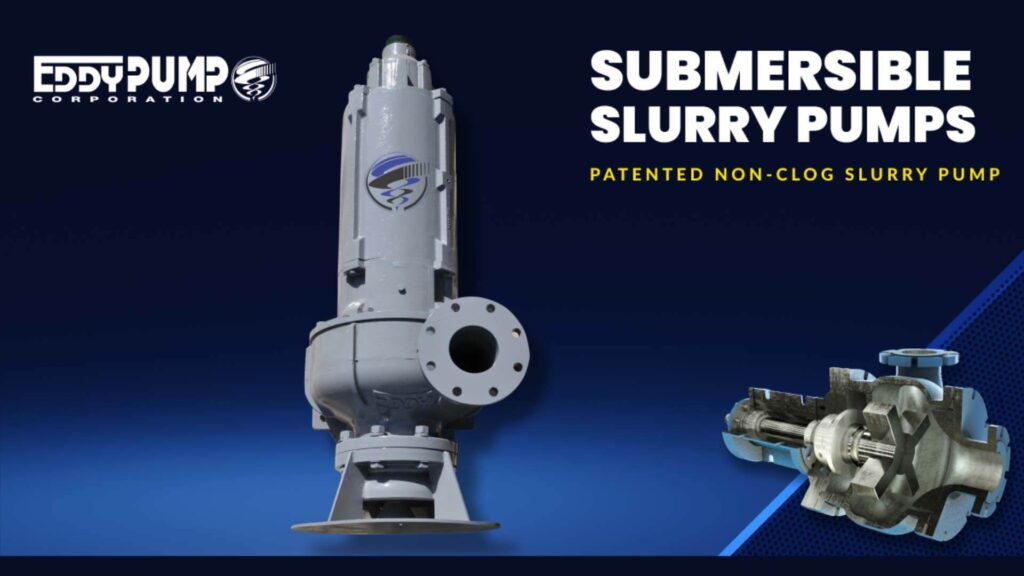
High-solids dredging presents unique challenges that require specialized equipment engineered to withstand abrasive materials and high-density mixtures. A well-designed submersible dredge pump incorporates advanced features that improve durability, efficiency, and overall performance. Key design elements, such as heavy-duty impellers, wear-resistant materials, advanced sealing systems, and hydraulic power options, allow these pumps to handle high-solids applications effectively while reducing maintenance and operational costs.
Heavy-Duty Impellers
The impeller is the core component of any submersible dredge pump. It creates the suction force needed to draw in the slurry and discharge it through the system. In high-solids environments, impellers are constantly worn by abrasive materials such as sand, gravel, and mining waste.
- Use of Hardened Materials to Resist Abrasion:
High-performance submersible dredge pumps are equipped with impellers made from hardened materials, such as high-chrome alloys or ceramic composites. These materials are highly resistant to abrasion, extending the lifespan of the impeller even when handling coarse or sharp particles.
- Open vs. Closed Impeller Designs for Optimal Handling of Varying Particle Sizes:
- Open impellers are ideal for handling large and irregularly shaped particles because they allow more space for solids to pass through without clogging.
- Closed impellers provide greater efficiency for fine particle slurries by reducing recirculation losses and improving pressure generation.
Selecting the appropriate impeller design ensures the pump can handle the specific slurry characteristics without losing efficiency or experiencing blockages.
Wear-Resistant Materials
Slurry dredging involves highly abrasive and corrosive materials that can rapidly degrade standard pump components. To prevent premature wear and failure, high-quality submersible slurry pumps are constructed from materials specifically chosen for their resistance to abrasion and corrosion.
- High-Chrome Alloys and Polyurethane Liners:
High-chrome alloys are commonly used for impellers, volutes, and wear plates due to their hardness and resistance to erosion from sand and gravel. Polyurethane liners provide additional protection by absorbing impact and reducing surface wear.
- Impact on Longevity and Maintenance Cycles:
The use of wear-resistant materials extends the operational life of the pump, reducing the frequency of maintenance and downtime. This translates to lower operating costs and improved overall efficiency in high-solids applications.
Advanced Sealing Systems
Proper sealing is critical to prevent slurry leakage and protect the pump’s internal components from damage. In high-solids and corrosive environments, standard seals can quickly deteriorate, leading to equipment failure and increased maintenance costs.
- Mechanical Seals to Prevent Leakage:
High-quality submersible dredge pumps use double mechanical seals made from tungsten carbide or silicon carbide, which provide excellent resistance to abrasion and pressure. These seals create a secure barrier, preventing slurry from entering the motor housing and causing damage.
- Specialized Coatings to Resist Chemical Damage:
In addition to mechanical seals, many submersible slurry pumps feature protective coatings designed to resist chemical corrosion. Epoxy and ceramic-based coatings protect the pump’s metal surfaces from acidic and reactive compounds found in mining and industrial slurries.
Hydraulic Power Options
A hydraulic submersible dredge pump offers several advantages over electrically powered models, particularly in high-density and remote applications. Hydraulic pumps provide more control over speed and pressure, making them better suited for handling heavy slurries with high solids content.
- Advantages of a Hydraulic Submersible Dredge Pump in High-Density Environments:
Hydraulic pumps generate high torque at lower speeds, allowing them to handle dense slurries more effectively. The ability to adjust speed and pressure ensures consistent material flow, even when dealing with varying particle sizes and slurry consistencies.
- Greater Control Over Flow Rate and Pressure:
Hydraulic systems allow operators to fine-tune the pump’s performance based on the slurry’s density and viscosity. This level of control improves efficiency and reduces wear on the pump’s components, extending its operational lifespan.
Managing Slurry Density and Viscosity for Optimal Performance
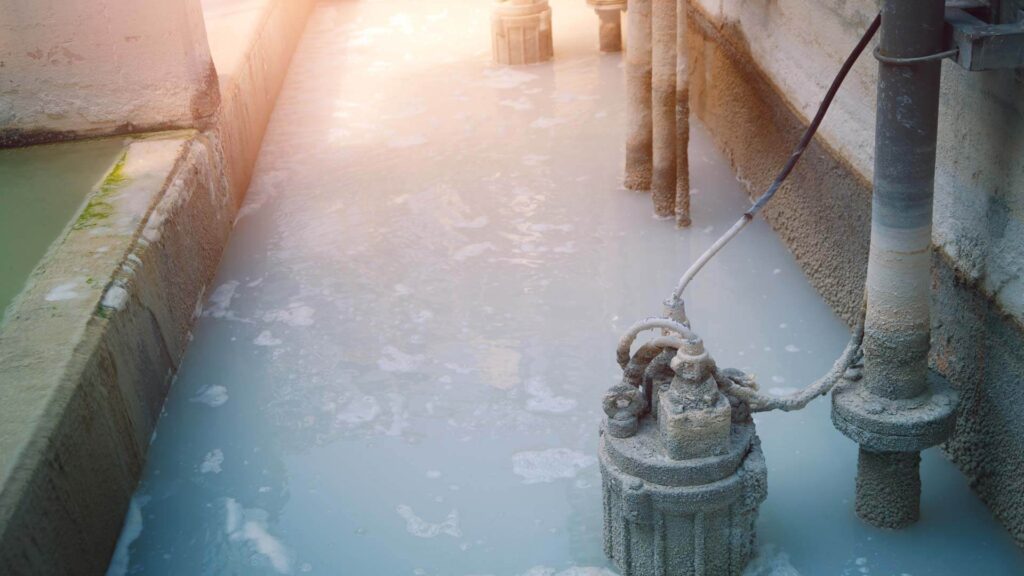
Managing slurry density and viscosity is essential for ensuring consistent and efficient performance of a submersible dredge pump. Slurries with high density and viscosity create additional resistance within the pump, leading to increased wear, higher energy consumption, and reduced flow rates. Proper pump sizing, speed control, and effective use of agitators and mixers can significantly improve material handling and extend the pump’s operational lifespan.
Proper Pump Sizing and Selection
Selecting the right size and capacity for a submersible dredge pump is critical for maintaining consistent performance in high-solids applications. An undersized pump may struggle to handle the load, while an oversized pump can lead to unnecessary energy consumption and increased wear.
- Determining Flow Rate and Head Pressure Requirements:
Flow rate and head pressure are two key parameters that define a pump’s capacity. Flow rate refers to the volume of slurry the pump can handle over a specific period, while head pressure measures the height or distance the slurry must be transported. For high-density and high-viscosity slurries, the pump must be capable of maintaining adequate flow and pressure without overloading the motor or causing cavitation.
- Matching Pump Capacity to Slurry Characteristics:
A high-density slurry requires a pump with increased power and torque to maintain flow. In applications with varying slurry density and viscosity, a hydraulic submersible dredge pump provides greater flexibility. The hydraulic drive system allows the operator to adjust the pump’s output based on changing material characteristics, ensuring optimal performance even under fluctuating conditions.
Adjusting Pump Speed and Pressure
Slurry consistency can change during dredging operations, requiring adjustments to the pump’s speed and pressure to maintain steady performance.
- Variable Speed Controls for Changing Slurry Consistency:
A hydraulic submersible dredge pump is well-suited for handling variable slurry consistency because hydraulic systems allow for precise speed and pressure control. This flexibility enables the pump to handle sudden increases in solids concentration or changes in material viscosity without losing efficiency.
- Maintaining Optimal Flow Rate and Pressure:
Maintaining a consistent flow rate and pressure is essential to prevent clogging and maintain efficient material transport. Automated control systems can adjust the pump’s operating parameters based on real-time feedback, ensuring consistent performance even as slurry density and viscosity change.
Use of Agitators and Mixers
Sedimentation and clogging are common issues when handling high-density and high-viscosity slurries. Without proper agitation, solid particles can settle at the bottom of the suction chamber, reducing flow and increasing wear on the pump’s components.
- Preventing Sedimentation and Clogging:
Many high-performance submersible slurry pumps are equipped with built-in agitators that keep the slurry in constant motion. Agitators prevent solid particles from settling, ensuring that the material remains evenly mixed and easy to transport.
- Improving Material Flow into the Pump Intake:
Efficient material flow is essential for maximizing pump performance. Agitators and mixers help break up clumps of solid material and create a consistent slurry mixture, allowing the pump to handle larger particle sizes and higher concentrations without clogging or losing suction.
Monitoring and Maintenance
Regular monitoring and maintenance are essential to ensuring the long-term performance of a submersible dredge pump in high-solids applications. High-density slurries create significant wear on the impeller, casing, and seals, so equipment conditions must be tracked and performance settings adjusted as needed.
- Wear Monitoring for Impellers and Liners:
High-solid slurries cause gradual wear on impellers and liners, which can reduce performance and increase energy consumption. Modern submersible slurry pumps are often equipped with wear sensors that provide real-time feedback on component condition, allowing operators to schedule maintenance before a failure occurs.
- Pressure and Flow Rate Adjustments Based on Real-Time Feedback:
Monitoring systems can track changes in slurry density, viscosity, and flow rate, adjusting the pump’s speed and pressure to maintain optimal performance. In a hydraulic submersible dredge pump, real-time feedback enables precise adjustments to the hydraulic system, ensuring the pump remains efficient and responsive to changing material characteristics.
Benefits of Submersible Dredge Pumps in High-Solids Applications
A submersible dredge pump offers significant advantages when handling high-solids applications in industries such as mining, construction, and environmental cleanup. Unlike surface-mounted pumps, submersible dredge pumps are designed to operate while fully submerged in the slurry, providing more direct and powerful suction. Their ability to handle abrasive and high-density materials with minimal wear and clogging makes them essential for improving efficiency, lowering operating costs, and enhancing material recovery.
Improved Efficiency
Handling high-density and high-viscosity slurries can put a significant strain on standard pumps, leading to reduced performance and frequent breakdowns. A well-designed submersible dredge pump is built to maximize efficiency even under these demanding conditions.
- Reduced Downtime and Maintenance:
Submersible dredge pumps are constructed from heavy-duty materials, such as high-chrome alloys and polyurethane liners, which resist wear and corrosion from abrasive materials. This durability reduces the frequency of breakdowns and repairs, leading to increased operational uptime. Additionally, advanced sealing systems and wear-resistant impellers prevent clogging and minimize damage from abrasive particles, further reducing maintenance requirements.
- Higher Throughput and Better Material Handling:
The powerful suction and discharge capabilities of a hydraulic submersible dredge pump enable it to handle higher concentrations of solids and larger particle sizes without losing efficiency. Hydraulic pumps provide greater torque and speed control, allowing for more consistent material flow and increased processing capacity. This results in higher throughput and more efficient material transport over long distances.
Lower Operating Costs
The operational costs associated with dredging can quickly add up due to energy consumption, equipment wear, and maintenance. A high-quality submersible slurry pump is designed to reduce these costs by improving energy efficiency and reducing component wear.
- Reduced Energy Consumption:
A hydraulic submersible dredge pump is more energy-efficient than traditional pumps because it operates directly in the slurry, eliminating the need for long suction lines and reducing friction losses. The ability to adjust pump speed and pressure based on real-time slurry characteristics also reduces energy waste and improves overall efficiency.
- Fewer Repairs and Replacements Due to Durable Construction:
The use of wear-resistant materials, such as high-chrome alloys and ceramic coatings, extends the lifespan of the pump’s impeller, volute, and seals. Fewer breakdowns and less frequent part replacements translate to lower maintenance costs and reduced downtime, ultimately improving the pump’s return on investment.
Enhanced Material Recovery
Efficient material recovery is critical in mining and dredging operations, where maximizing the amount of recoverable material directly impacts profitability. A submersible dredge pump enhances material recovery by improving solid-liquid separation and ensuring consistent handling of high-density mixtures.
- Better Separation of Solids from Slurry:
A high-efficiency submersible slurry pump is designed to handle high concentrations of solids without clogging or losing suction. The pump’s ability to process larger particle sizes and higher solids content allows for better separation of valuable materials from waste, increasing overall recovery rates.
- Increased Recovery Rates in Mining and Dredging Operations:
In mining applications, a hydraulic submersible dredge pump can extract valuable minerals more effectively by maintaining consistent suction and discharge pressure. The improved handling of abrasive and high-density slurries ensures that more material is recovered and processed, reducing material loss and improving operational efficiency.
Conclusion
A submersible dredge pump is an essential tool for handling high-solids applications in industries such as mining, construction, and environmental remediation. Its ability to operate while fully submerged provides enhanced suction power, improved efficiency, and greater durability in challenging environments. By effectively managing slurry density and viscosity, these pumps maintain consistent performance even when handling abrasive materials and high-density mixtures. The use of heavy-duty impellers, wear-resistant materials, and advanced sealing systems ensures long-lasting operation with reduced maintenance requirements, minimizing downtime and improving overall productivity.
A hydraulic submersible dredge pump offers a distinct advantage for operations that demand greater flexibility and control. Its variable speed and pressure settings allow for precise adjustments based on changing slurry characteristics, ensuring optimal material handling and enhanced recovery rates. Investing in a well-designed submersible slurry pump not only improves throughput and reduces operating costs but also enhances the overall efficiency and profitability of high-solids dredging operations.


